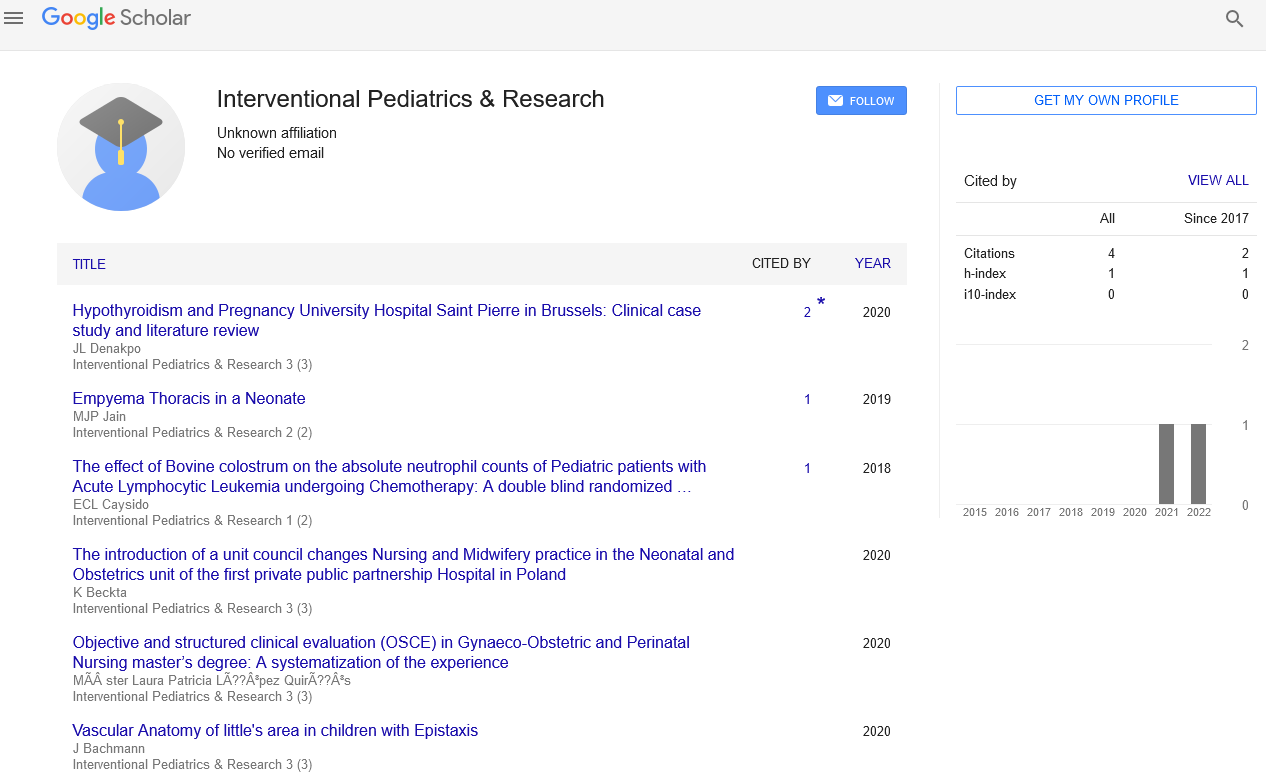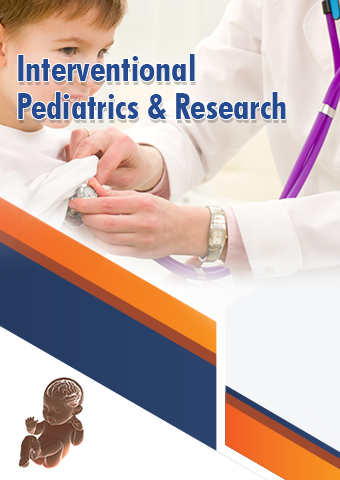Editorial - Interventional Pediatrics & Research (2023) Volume 6, Issue 3
Advances in fetal congenital heart disease (FCD) gene research and diagnostic testing
Rabindra Vedi*
Department of Nephrology, Tufts Medical Center, USA
- *Corresponding Author:
- Rabindra Vedi
Department of Nephrology, Tufts Medical Center, USA
E-mail: Rabindravedi4@gmail.com
Abstract
Congenital Heart Disease (CHD), a type of congenital malformation, is a polygenic disease that is related to several major genes and is related to environmental factors. Advancements in science and technology have led to advances in the study of genetic patterns as well as testing methods. To understand how each gene contributes to normal and pathological anatomies, CHD research has been a major goal. We reviewed the development of testing methodologies and CHD related genes to provide some insights for the prenatal diagnosis of CHD and hope to achieve intervention and treatment of CHD at the gene level in the near future. The congenital heart disease is a congenital malformation that occurs during human embryonic development and is a common cause of death in new-borns. The incidence rate of CHD is estimated to be 4 ‰ – 5‰, and the internationally recognized birth rate is about With the development of ultrasound and paediatric cardiac surgery, it can be diagnosed during pregnancy and treated surgically after delivery.
Keywords
Congenital heart disease • Genetic patterns • Pathological anatomies • Intervention and treatment • Cardiac surgery
Introduction
Due to advances in ultrasound and paediatric heart surgery, Congenital Heart Disease (CHD) can be diagnosed and treated during pregnancy and after birth. However, it is important to determine if there is serious chromosome or genetic abnormalities. Currently, CHD is considered to be a polygenic disease associated with some major genes and related to environmental factors. It is therefore very important to understand the genetic factors associated with CHD in pregnant women and their prognosis in children. using scRNA-seq to explore the transcriptase properties of cells in the cardiac conduction system and to identify specific genes related to each component [1,2]. These discoveries have the potential to improve the diagnosis, treatment and intervention of cardiac arrhythmia and heart block. Combining scRNA-seq information from both mouse and adult human cardiac tissues, researchers can identify which cells and tissues express relevant genes related to cardiac disease in genome-wide association studies (GWAS).Cardiac maturation is an intricate process that requires coordination of several cell types and their respective environments [3]. ScRNA-seq can be used to gain insights into the interactions between cells, such as in the following example: Wang et al. integrated scRNA- seq data from several stages of mouse cardiac development to construct a cell interaction network (CIN) and regulatory signal network (RTN).In addition to cell interactions, spatial information plays an important role in understanding heart development. Genes associated with congenital heart disease [4].
Description
ScRNA-seq data can be used to construct a cell interaction network as well as a regulatory signal network. In addition to cellular interactions, space information is also important for understanding heart development. For example, in Asp et al.,12, scRNA and RNA sequencing data from human embryonic heart cells were combined with spatial and translational genomic data, as well as in situ sequencing data, to construct a 3D gene expression map of a developing heart. This method can be used to identify cells that are involved in normal development and those that are involved in pathological conditions. By using this approach, it is possible to accurately locate the gene expression.
GATA4
GATA4 is one of the most conserved genes in evolution. It is one of the first signs of heart cells early in embryonic development and begins to express early in heart development.GATA4 is located on chromosome 8 with 7 exons [5]. It plays an important role in cardiac precursor cell differentiation, cardiac cyclization, compartmentalization, and maintenance of cardiac conduction system. In autosomal dominant inheritance (ASD), GATA4 mutation is associated with the majority of ATS (Atrial Septal Defects).Patients with ASD may be complicated with VSD (Ventricular Septal Defect), PS (Severe Diastolic Dysfunction), and ATR (Atrioventricular Reflux) but not with SYSTOLIDAL (Systolic Function, Cardiac Conduction System, Coronary System, and Coronary System Diseases) [6].Studies have shown that the role of GATA4 in NK2 homeOBox 5 Patients with congenital heart defects (CHD) in southern China and it is thought that GATA4 plays a more significant role in CHD compared to NKX2. In summary, GATA4 interacts with other genes to control gene expression, which is associated with a range of heart defects and has some importance in Chinese population [7].
Methods for testing CHD genes
Traditional testing methods: Currently, CHD is estimated to be 55% – 65% heritable, with single gene inheritance accounting for 15% – 35% and multi gene inheritance accounting for 85% – 75% – 90% of the overall heritability [8]. CHD caused by coadministration of heredity and pregnancy risk factors account for 75%– 90% of the total heritability. Chromosome karyotype analysis can currently be used to identify CHD caused by chromosome abnormalities such as Down syndrome. As science and technology advances, single nucleotide polymorphism arrays (SNP) and other technologies can be used to diagnose a single gene-related CHD.Whole-exome sequencing (WES) and circulating cell-free DNA screening (CSDS) can also be used [9,10].
Conclusion
There are many genes that are associated with CHD and there are network effects between each of these genes. Some of the different genes have some localization effects on CHD pathogenesis. As testing technology advances, the common testing methods and expression evaluation of several genes can further elucidate the pathogenesis. Network effects and location effects were observed between different genes and CHD incidence was correlated with gene expression. Through the research on the gene of chD and animal testing, intervention and treatment at the gene level level of chD can be realized in the future.
References
- Mark S. Gene-Environment Interactions During the First Thousand Days Influence Childhood Neurological Diagnosis. Semin Pediatr Neurol. 42, (2022).
- Benjamin H, Lianne G. Congenital Malformations and Genetic Disorders of the Respiratory Tract: (Larynx, Trachea, Bronchi, and Lungs). Am Rev Respir Dis. 120, 151-185(1979).
- Rikke S. From next-generation sequencing to targeted treatment of non-acquired epilepsies. Expert Rev Mol Diagn. 19,217-228(2019).
- Renske O. International consensus recommendations on the diagnostic work-up for malformations of cortical development. Nat Rev Neurol. 16,618-635 (2020).
- Pedro M. Advantages of current fetal neuroimaging and genomic technologies in prenatal diagnosis: A clinical case. Eur J Med Genet. 104-652(2022).
- Ratnam S, Michele MP, Robert M et al. MicroRNAs as biomarkers for birth defects. MicroRNA. 11, 2-11(2022).
- Nolan J, Danielle M, Fink J. Genetics of epilepsy. Handb Clin Neurol. 148,467-491(2018).
- Ludvigsson, Jonas F, Ludvigsson J. Coeliac disease in the father affects the newborn. Gut. 49,169-175 (2001).
- Barkovich A. A developmental and genetic classification for malformations of cortical development: update 2012. Brain 135, 1348-1369(2012).
- Guerrini R. Genetic malformations of cortical development. Exp Brain Res. 173, 322-333(2006).
Indexed at, Google Scholar, Crossref
Indext at, Google Scholar, Crossref
Indexed at, Google Scholar, Crossref
Indexed at, Google Scholar, Crossref
Indexed at, Google Scholar, Crossref
Indexed at, Google Scholar, Crossref
Indexed at, Google Scholar, Crossref
Indexed at, Google Scholar, Crossref
Indexed at, Google ScholarCrossref


